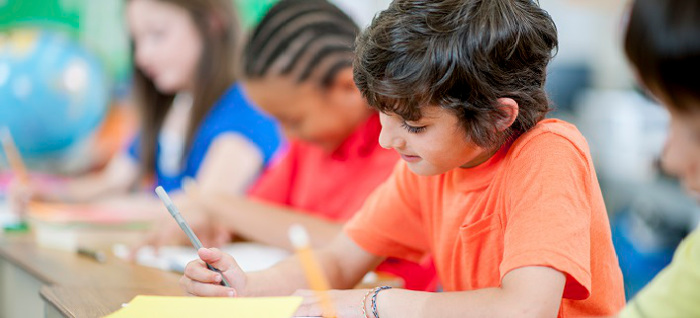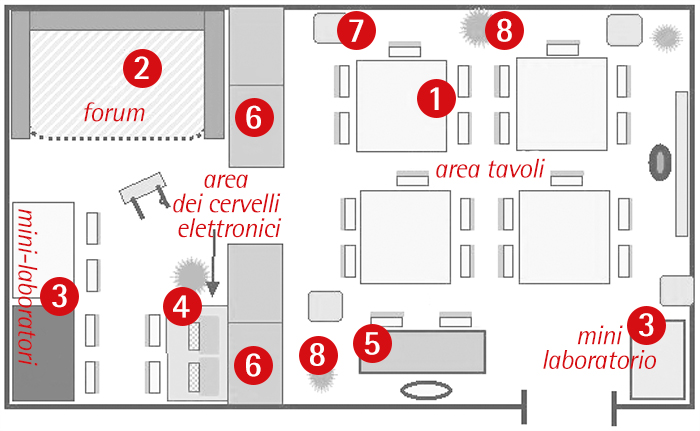 EN
EN
 PT
PT
The global curriculum method for a school community
Product: Book
Trim size in cm: 17x24
Pages: 248
ISBN: 978-88-590-1166-8
Publication date: 01/10/2016
REQUEST A SAMPLE OR MORE INFORMATION
Departing from the idea of the rucksack as an emblematic object, invented for armies and travellers venturing to inhospitable places, this book examines school as a complex system, an environment in which all aspects, both material and immaterial ones, have a value: on the one hand tools, furniture, buildings and labs, and on the other goals, assessment, knowledge, methods, planning, relationships and rules. The rucksack reminds us, surprisingly, of a pedagogical model built on individualism and standardisation: it is like the synonym of a difficulty in developing meaningful learning based on experience. So a challenge is being thrown down, aimed at reprogramming schools with the involvement of pupils and teachers. The «school without a rucksack», a project which is engaging 11 institutes in Tuscany, is about rediscovering the dimension of hospitality and aims to create a research community, encouraging pupil responsibility and the acquisition of competences. Every aspect is redesigned with the global curriculum method, for which worksheets and practical tools for class management and activity planning are provided. An innovation in this book is that it combines a pedagogical approach with an organisational one, thus the book targets both teachers and school heads.
PART ONE The vision
- Why the rucksack?
- A research community
- Hospitality as a dimension of knowledge
- The dependence model and the responsibility model
PART TWO Method and practice
- Planning the educational environment: the global curriculum
- The work method with the GCA
- Creating a Global Curriculum Approach manual
- The classroom, the heart of school organisation
- Class management: other suggestions
PART THREE In-depth analysis
- Educational environment and needs for growth
- Space, time and technology
- Voice, body and listening
- The group and the community
- From planning by objectives to planning the educational environment

The classroom is the heart of school organisation. We need to understand what relationships are established between the subjects and objects at work in the classroom. A non-traditional classroom set-up, like that of the national project «At school with no rucksack», offers food for thought for changing learning environments too.

The atmosphere in the class, the relationships established there, ways of working alone, all together, in small groups and in pairs, the materials and tools that are used, the furniture and the way it is set out, all these can contribute to a learning environment which is inspired by the research community and by values of responsibility and hospitality.
The teacher's role is to organise the «research» and facilitate everyone's work. The classroom thus comes to represent a place of identity and reference, the «home base» in which individual pupils and the group of pupils find a constant point of reference, a base, a personalised environment which you can use as a starting point towards opening up to encounters and opportunities outside of the classroom and the school.
This diagram shows one (not the only) way of organising a classroom in the «At school with no rucksack» project, which allows a mix between polytopic space and polychronic time.

Naturally, as in other organisations (and in the adult world), the majority of the material is shared and, (something that you rarely find in traditional schools) is not locked away in cupboards but available to all. The emphasis on the significance of classroom-space should not, however, detract from the importance of organising external spaces, - such as rooms for conferences and meetings, laboratories, rooms for specific purposes (music, foreign languages, scientific experiments) and a teachers' room - which should be carefully designed.
At school with no rucksack
The global curriculum method for a school community
The «school without a rucksack», a project which is engaging 11 institutes in Tuscany, is about rediscovering the dimension of hospitality and aims to create a research community, encouraging pupil responsibility and the acquisition of competences. Every aspect is redesigned with the global curriculum method, for which worksheets and practical tools for class management and activity planning are provided. An innovation in this book is that it combines a pedagogical approach with an organisational one, thus the book targets both teachers and school heads.